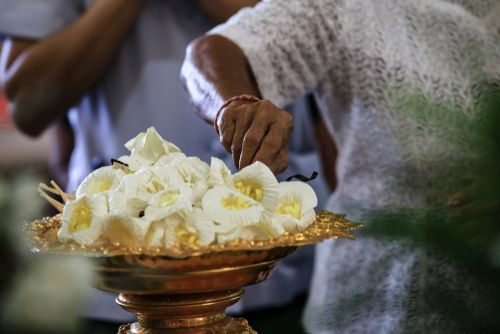 You’ve been invited to attend a Sikh funeral, but you’re not sure what to expect. You don’t know the customs or traditions, whether to send flowers or bring food, or what to wear or do when you get there. Read on for some tips.
You’ve been invited to attend a Sikh funeral, but you’re not sure what to expect. You don’t know the customs or traditions, whether to send flowers or bring food, or what to wear or do when you get there. Read on for some tips.
Sikh Beliefs About Death
Sikhs believe that upon death, their souls will be reunited with their god, Waheguru, meaning “wonderful teacher.” Even as they mourn the loss of their loved one, they celebrate that reunification.
Sikhs believe in the cremation of the bodies of the deceased. The body is an empty shell, and cremating it allows the soul to detach itself from it. This hastens the soul’s reunification with Waheguru. Only close relatives attend the cremation. They later scatter the ashes in running water.
At the Antam Sanskaar
Antam Sanskaar means “final ceremony” in Punjabi and is the main part of the funeral. The Antam Sanskaar usually takes place at the gurdwara, the Sikh place of worship. However, it can also take place at the family home or at the crematorium.
A granthi, a Sikh minister, or a family member will conduct the Antam Sanskaar, which is typically very religious in nature. There are three main parts to the ceremony:
- The congregation reads or sings Ardas, a community prayer that’s read at the beginning of all ceremonies. Many of the Sikh prayers and holy texts are set to music. Sikhs believe the songs are both awakening and deeply healing.
- The Japji, a daily prayer, is recited or sung. It’s the first verse of the Siri Guru Granth Sahib, which is the Sikh holy book.
- The Kirtan Sohila, a nighttime prayer, is said or sung.
If you don’t speak Punjabi or practice Sikhism, you won’t be expected to recite or sing along. Guests at the Antam Sanskaar generally sing and recite prayers for 30 to 60 minutes before the body is cremated.
Before and During the Ceremony
If you have the opportunity to greet the family of the deceased, it’s a sign of respect to greet the eldest member of the family first. A traditional greeting is to hold your hands together like you’re praying and bow forward. However, shaking hands is also acceptable. There may not be time to pay your respects, though. Look around to see what others are doing and take your cues from them.
It’s uncommon to see displays of emotion at the Antam Sanskaar. Sikhs believe that calmness and detachment show respect to Waheguru and acceptance of his will. Unnecessary emotional displays indicate you disagree with Waheguru’s wishes.
Sikhs believe in reincarnation, and that through the cycle of life, death, and rebirth, they become closer to Waheguru — which is something to celebrate. Crying is in direct opposition to this celebration, so you likely won’t see any. Instead, you’ll see Sikhs chanting “Waheguru” to express their devotion to him. They might also chant the word “Akal,” which means “undying.”
What To Wear and Bring
Members of the mourning family and other Sikhs wear all white. Men wear turbans or hats, and women cover their heads. Non-Sikh mourners aren’t expected to wear white; traditional Western funeral attire is fine. It’s a sign of respect before entering the gurdwara or home where the ceremony’s being held to remove your shoes and cover your head.
You aren’t expected to send flowers, since the family will arrange the traditional orange and white chrysanthemums around the body. Gifts aren’t expected either. If you’d like to bring food for the family to enjoy after the ceremony, bring a vegetarian dish, since many Sikhs don’t eat meat.
Sikh funerals are very religious and very traditional. You won’t see weeping mothers or fathers rending their garments; calmness and detachment are the order of the day. If you comport yourself with respect, your presence will add to the ceremony.